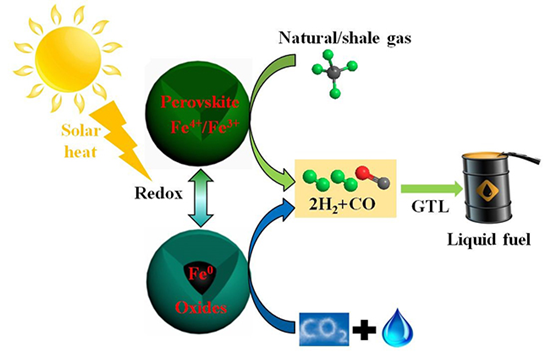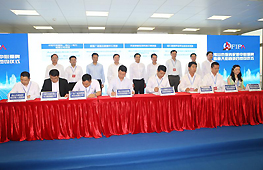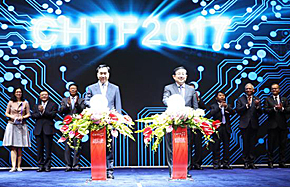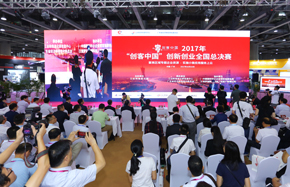Scientists fabricate iron-based vatalyst for chemical looping syngas production
A research group led by Professor Wang Xiaodong from the Dalian Institute of Chemical Physics (DICP) of the Chinese Academy of Sciences developed a kind of intelligent and highly efficient iron-based catalyst for syngas (H2/CO=2) production from methane and H2O-CO2 mixture. Their findings were published in Communications Chemistry.
 |
|
Schematic showing the process for sustainable production of liquid fuel from CH4 and CO2-H2O mixture. |
Sustainable upgrading the world abundant methane, water and carbon dioxide to value-added chemicals is highly desired to tackle the steeply increased global energy demand and mitigate the climate change.
The chemical looping strategy, which utilizes the lattice oxygen of metal oxides as oxygen source instead of expensive and nonselective gas oxygen, is a promising alternative for solar energy harvest. The key of this process lies in selection of suitable oxygen carriers (OCs) to give satisfactory reactivity, selectivity and lattice oxygen capacity.
The scientists found that a switch-like structure transformation between perovskite phase and Fe0@oxides composite with core-shell structure during the reaction. Such structure evolution enabled wide shuttling of Fe species from Fe4+ to Fe0, offering a satisfactory amount of lattice oxygen for methane oxidation.
The direct contact channel between emerged Fe0 with methane was switched off by the oxides layer, enabling continuous deep reduction of Fe cations to donate more lattice oxygen while suppressing coke deposition. Thus, excellent performance with ideal syngas of H2/CO ratio of 2/1 and CO selectivity above 95% was realized, accompanied with good stability over at least 100 cycles.
Importantly, the intermediate with core-shell structure can be regenerated to original perovskite structure by H2O-CO2 mixture with the generation of another source of syngas.
This work was supported by National Key Projects for Fundamental Research and Development of China and National Natural Science Foundation of China.





















